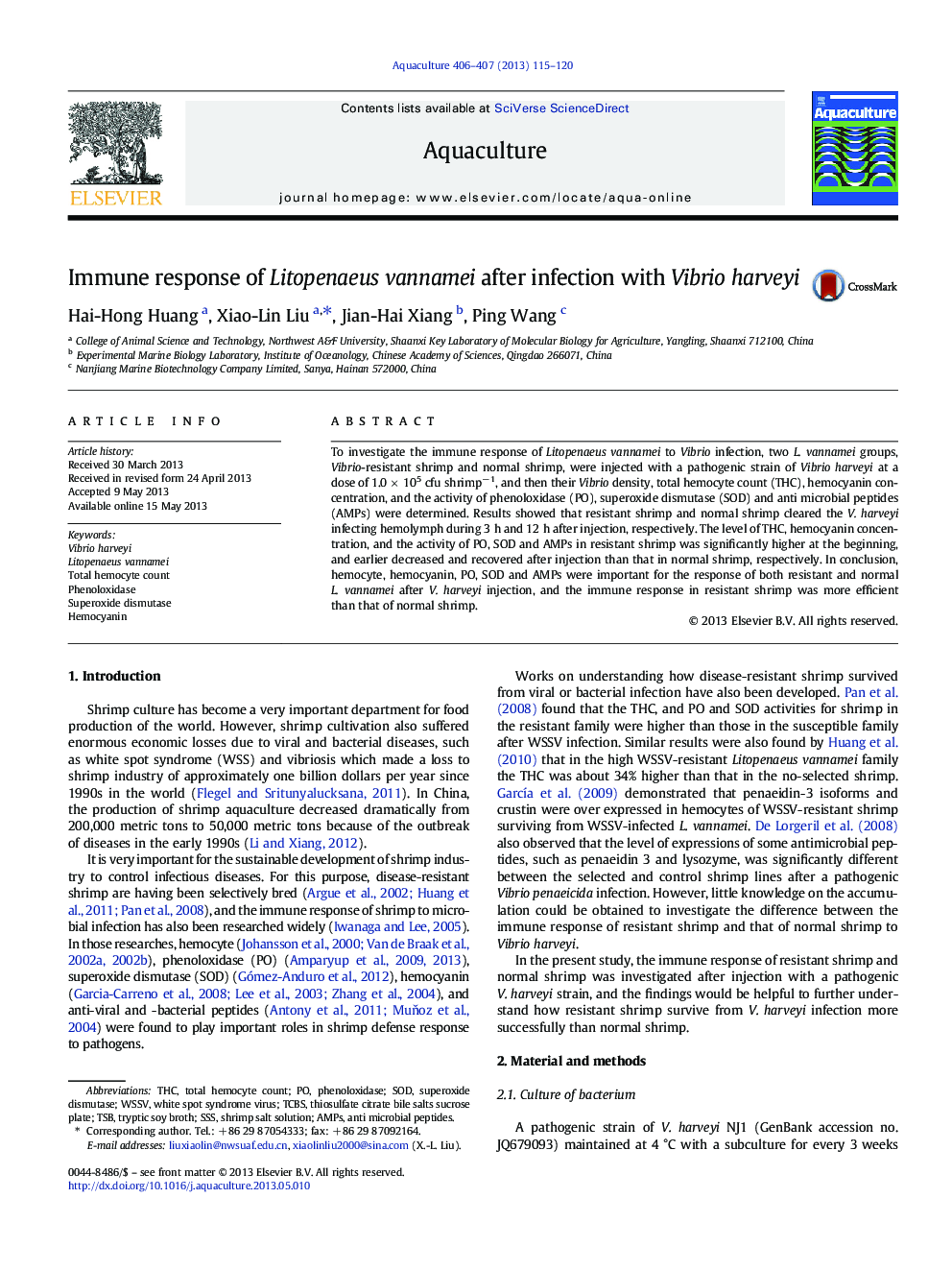| Article ID | Journal | Published Year | Pages | File Type |
|---|---|---|---|---|
| 8495573 | Aquaculture | 2013 | 6 Pages |
Abstract
To investigate the immune response of Litopenaeus vannamei to Vibrio infection, two L. vannamei groups, Vibrio-resistant shrimp and normal shrimp, were injected with a pathogenic strain of Vibrio harveyi at a dose of 1.0 Ã 105 cfu shrimpâ 1, and then their Vibrio density, total hemocyte count (THC), hemocyanin concentration, and the activity of phenoloxidase (PO), superoxide dismutase (SOD) and anti microbial peptides (AMPs) were determined. Results showed that resistant shrimp and normal shrimp cleared the V. harveyi infecting hemolymph during 3 h and 12 h after injection, respectively. The level of THC, hemocyanin concentration, and the activity of PO, SOD and AMPs in resistant shrimp was significantly higher at the beginning, and earlier decreased and recovered after injection than that in normal shrimp, respectively. In conclusion, hemocyte, hemocyanin, PO, SOD and AMPs were important for the response of both resistant and normal L. vannamei after V. harveyi injection, and the immune response in resistant shrimp was more efficient than that of normal shrimp.
Keywords
Related Topics
Life Sciences
Agricultural and Biological Sciences
Aquatic Science
Authors
Hai-Hong Huang, Xiao-Lin Liu, Jian-Hai Xiang, Ping Wang,
